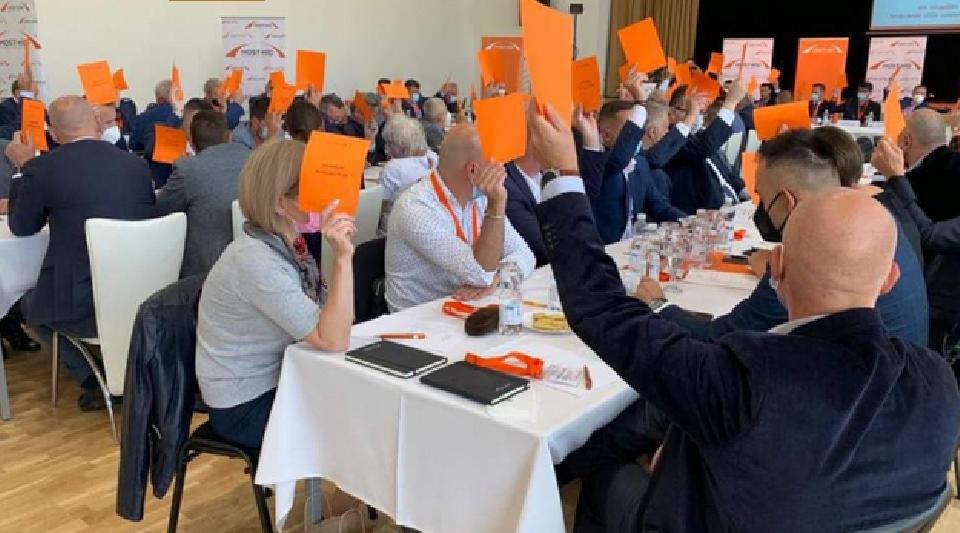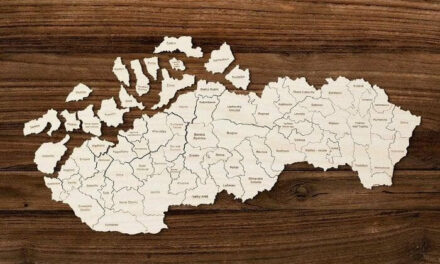In Rimaszombat, the congress of the Hungarian Community Party also gave a nod to it, thus uniting the three Hungarian parties in the highlands: MKP, Híd-Most and Összefogas. There is no shortage of optimistic statements, but in the background, the more realistic ones also consider what happened to be necessary.
On Sunday evening, Zoltán Cziprusz, MKP's vice-chairman, county and city representative, greeted the party's delegates, where Miklós Duray, the doyen of Hungarian national politics in the highlands, also cast his vote in favor of unification. "We offer a way out and a vision for the future," was the political declaration of the last congress of the MKP, as the party formally merges into the joint party called the Alliance, where it continues to exist as a platform.
The same thing happened at the Most-Híd congress on Saturday, where party leader László Sólymos was unable to participate due to a coronavirus infection, but he positively evaluated the decision of the delegates of the general assembly. After all, for many years the two major Hungarian formations in the highlands, the centre-right-conservative Hungarian Community Party (MKP) and Most-Híd, founded by Béla Bugár, who stormed out of the former in 2009, have tasted the bitter pill. The merger of the two parties, essentially competing for Hungarian votes, has also recently been tried to be brought under the roof by the - aptly named - Zöszefogas movement, which was founded just two years ago.
The necessity was clear: in 2006, at its peak, the MKP obtained almost 12 percent of the votes and was able to send 20 representatives to the 150-member legislature. The MKP was a factor, tied with the Slovak neo-fascists for the third largest party.
In the first election after the big party split, in 2010, the votes were split between the two formations, with Most-Híd winning, and MKP dropping out of the legislature. The Bugáres were in government twice, but their support continued to melt away, and in the end, the sobering slap of February 2020 was that none of the Hungarian - or primarily Hungarian - parties made it into the parliament.
The agreement has now become an inescapable compulsion for the parties with battered popularity in the fight against each other.
The series of pointing fingers and mutual insults went on for a while longer - Most-Híd criticized the persistence of the MKP, MKP the principled flexibility of the mixed party, as before.
Then they started a strange three-way game with the newly formed Alliance and with each other. For a long time, Most-Híd and MKP have been pointing the finger, always at the other, as to who is causing the failure of the collaboration. In 2020, it seemed several times that the ice would break, Béla Bugár, who was unacceptable to the MKP, also resigned from the leadership of Most-Híd.
After all this, it was a real surprise when on September 10 the three parties suddenly announced that they had reached an agreement. The new party, called Szövetség, "will finally create Hungarian political unity and can open a new chapter in the politics of the Highlands", now really, to say the least.
Moreover, it's not just any way: the almost-missed Zöfgag is plowing the other two parties under itself - we learned from Mózes Szabolcs, the president of Zfägogás. Technically, the situation is that the three forces are merging in Mózesék's party: the MKP and Most-Híd legally ceased to exist as parties at the weekend, and they continue to function as platforms for the Alliance.
MKP gets 50 percent, Most-Híd one-third, and Mózesék one-sixth. According to the president of the Association, the delay was due to the fact that the structures of the two major parties had to be harmonized. It was a matter of dry technical details, but for the fusion, all three formations had to modify their statutes.
the full article in Mandiner here













